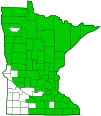marsh bellflower
(Palustricodon aparinoides)
Conservation • Wetland • Description • Habitat • Ecology • Use • Distribution • Taxonomy
Description |
Marsh bellflower is a 6″ to 36″ tall perennial forb that rises from slender underground stems (rhizomes) very shallow roots. The stems are weak, loosely spreading, and usually reclining on or tangled with adjacent vegetation. They are often somewhat 3-angled and are sparingly branched toward the top. They are slightly rough to the touch due to short, stiff, downward-curved hairs. The leaves are alternate, linear to narrowly lance-shaped, ¾″ to 3½″ long, and up to 3 ⁄16″ wide, on average 6 to 12 times as long as wide. They become gradually shorter as they ascend the stem. They are attached to the stem without a stalk. They are angled or tapered at the base and short-tapered to a point at the tip. They are rough to the touch with short, stiff, backward-curved hairs along the margins and on the midvein on the underside. The margins sometimes have a few minute teeth. The inflorescence is a solitary flower on a long, slender stalk at the end of the stem and each branch. The flowers are funnel-shaped to more-or-less bell-shaped and 3 ⁄16″ to ½″ long. There are 5 sepals, 5 petals, 5 stamens, and 1 style. The sepals (calyx) are green, fused at the base into a 1 ⁄32″ to 1 ⁄16″long tube, then separated into 5 equal, triangular to lance-shaped, 1 ⁄32″ to 1 ⁄16″long lobes. The petals are pale blue to almost white. They are fused at the base into a 1 ⁄32″ to 1 ⁄16″long tube, then separated into 5 equal, ⅛″ to 5 ⁄16″ long lobes. The filaments on the stamens are dilated and hairy at the base. The style is 1 ⁄32″ to 1 ⁄16″long at flowering time and has a usually 3-lobed stigma at the tip. The fruit is an inversely egg-shaped to nearly globe-shaped, 1 ⁄32″ to 3 ⁄16″ long and wide capsule. |
Height |
6″ to 36″ Marsh bellflower has a weak stem and usually relies on adjacent plants for support. Print literature for this species gives its height as 20″ (Yatskievych, Steyermark’s Flora of Missouri, 2006) or 24″ (Chadde, Minnesota Flora, 2019). Online Virtual Flora of Wisconsin has it at up to 36″ tall. Based on personal observations, MinnesotaSeasons.com agrees with the latter source. |
Flower Color |
Pale blue to almost white |
Similar Species |
Habitat |
Wet. Sedge meadows, marshes, bogs, calcareous fens,and coniferous swamps. Full sun. |
Ecology |
Flowering |
July to September |
Pests and Diseases |
|
Use |
|
Distribution |
||
|
Sources Biodiversity occurrence data published by: Minnesota Biodiversity Atlas (accessed through the Minnesota Biodiversity Atlas Portal, bellatlas.umn.edu, 6/10/2025). |
|
| 6/10/2025 | ||
Nativity |
||
Native |
||
Occurrence |
||
Common |
||
Taxonomy |
|
Kingdom |
|
Subkingdom |
Pteridobiotina |
Phylum |
Tracheophyta (Vascular Plants) |
Class |
|
Order |
Asterales (Sunflowers, Bellflowers, Fanflowers, and Allies) |
Family |
Campanulaceae (bellflower) |
Subfamily |
Campanuloideae (bellflower) |
Genus |
Palustricodon |
Genus |
|
Subordinate Taxa |
|
Two varieties of marsh bellflower were traditionally recognized based on the shape of the leaves, the size of the corollas, and the size of the seed capsules. Campanula aparinoides var. aparinoides leaves are narrowly lance-shaped and up to 2″ long, on average 6 times as long as wide. C. a. var. grandiflora has slightly larger corollas; the leaves are narrowly lance-shaped and up to 3½″ long, on average 12 times as long as wide; and the seed capsules are larger. Both varieties occur in Minnesota. In print resources, Steyermark’s Flora of Missouri (Yatskievych, 2006) and Manual of Vascular Plants (Gleason and Cronquist, 1992) recognized both varieties, but Michigan Flora (Voss, 1996) states that “the distinctions are not sharp, and most authors no longer recognize the two as separate species (sic).” Among online resources, iNaturalist recognizes the two varieties; however, it appears to be unique in this practice. |
|
Synonyms |
|
Campanula aparinoides Campanula aparinoides var. aparinoides Campanula aparinoides var. erinoides Campanula aparinoides var. grandiflora Campanula aparinoides var. multiflora Campanula aparinoides var. rosea Campanula aparinoides var. uliginosa Campanula erinoides Campanula uliginosa Palustricodon aparinoides var. grandiflorus |
|
Common Names |
|
bedstraw bellflower eastern marsh bellflower marsh bellflower marsh harebell |
|
Visitor Photos |
||
Share your photo of this plant. |
||
This button not working for you? |
||
|
||
MinnesotaSeasons.com Photos |
||
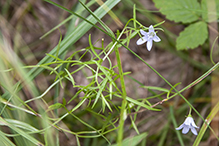 |
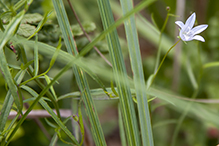 |
|
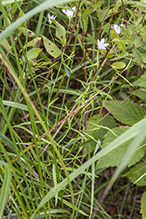 |
 |
|
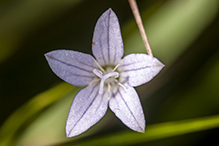 |
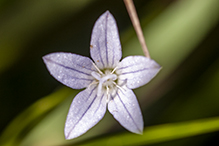 |
|
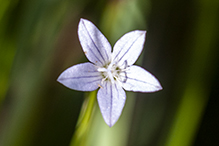 |

Slideshows |
|

Visitor Videos |
||
Share your video of this plant. |
||
This button not working for you? |
||
|
Other Videos |
||
|

Visitor Sightings |
||
Report a sighting of this plant. |
||
This button not working for you? |
||
|
|
MinnesotaSeasons.com Sightings |
||

|
Created: 4/20/2018 Last Updated: © MinnesotaSeasons.com. All rights reserved. |
